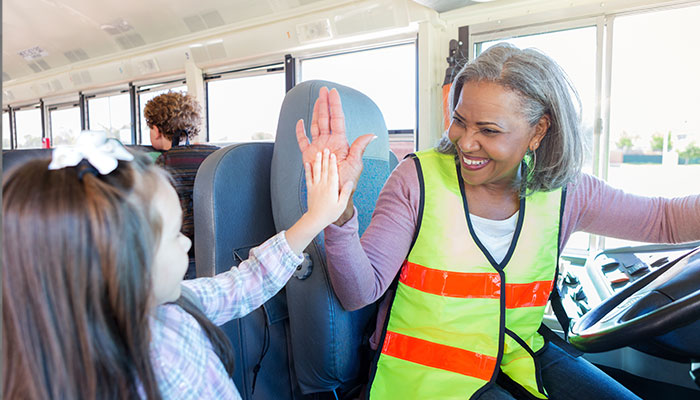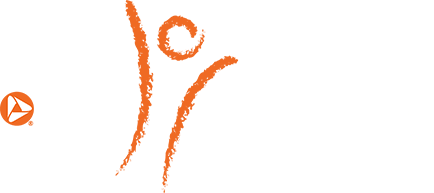While we believe that the books and resources recommended may be of value to you, keep in mind that these are suggestions only and you must do your own due diligence to determine whether the materials are appropriate and suitable for your use. PNC has no sponsorship or endorsement agreement with the authors or publishers of the materials listed.
COMMUNITY HELPERS

Bus Driver
Children will explore bus drivers as community helpers and connect movement to literature.

Lesson Objective
Children will learn about bus drivers as community helpers and use the text in a book to discover new ways to move their bodies.
Art
What You'll Need
- Large space – enough for children to move safely without touching each other
- Rubber spots or carpet squares – 1 per child
- Music – any movement music (see Lesson Tips for suggestions)
- Audio device – for playing music
- Book – The Little School Bus by Margery Cuyler
- Paper plates – 1 per child
What To Do
- Ask children to tell the different ways they get to school.
- Discuss reasons for riding on a bus (see Did You Know?).
- Ask the children what they think bus drivers do.
- Read the story, The Little School Bus.
- Discuss the different duties of the bus driver (see Did You Know?).
- Tell the children that they will be using creative movement to act out the story, The Little School Bus.
- Before reading, review the Important Rules of Dance (see Lesson Tips), and perform the steps of the warm-up:
- Breathing – Take several deep breaths in and out slowly.
- Touch – Using gentle energy, tap/tickle your skin all over the body (arms, shoulders, belly, legs, etc.). Then, using stronger energy, squeeze all over your body to wake up your skin and senses.
- Get Moving – Do several movements that will get the blood flowing. Some examples might be jumping, running in place with high knees, swinging arms or kicking legs, and jumping with legs crossed and then open.
- Have the children stand on their spots to act out the story.
- As you reread the story, have the children suggest movements to match the text on each page (rumbling, shifting, clunking, bouncing, turning, thumping, going round the bend, and so on).
- Distribute the paper plates to use as steering wheels.
- Read the story again and play some music as the children use their paper plates to drive their buses using some of the movements they suggested during the second reading of the story.
- Wrap up the session with some cool-down movements. These can be any kind of slow, calming movements.
Resources
Home School Resources
Home educators: use these printable lesson PDFs to teach this lesson to your home schoolers. They're available in English and Spanish.
Content Provided By
Common Core State Standards Initiative – These lessons are aligned with the Common Core State Standards ("CCSS"). The CCSS provide a consistent, clear understanding of the concepts and skills children are expected to learn and guide teachers to provide their students with opportunities to gain these important skills and foundational knowledge [1]. Visit the CCSS


